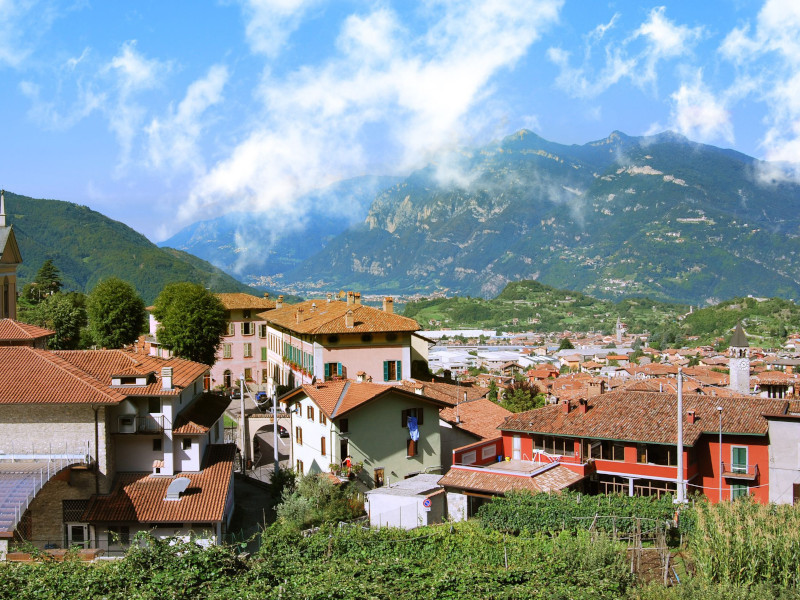Bienno
Bienno is an Italian comune in Val Camonica, province of Brescia, Lombardy, northern Italy. Geography The village is located in Val Grigna, on the northern side of the river Grigna. It is bordered by other towns such as: Bagolino, Berzo Inferiore, Bovegno, Breno, Cividate Camuno, Collio, Prestine. History In 1295 a dispute occurred with the neighbouring village Bovegno regarding some high pastures. On January 25, 1350 the bishop of Brescia invested iure feuds for a tenth of the rights in the territories of the Municipality of Bienno (vicinia) and men of Bienno. This also happened back in 1295, 1336, and later in 1388, 1423 and 1486). In 1391 the land of Bienno, which sided with the Ghibellines, was the site of extensive cattle raiding by the Guelph Camuni, led by Baroncino Nobili of Lozio. The peace of Breno was signed on 31 December 1397 by the representative of the community of Bienno, Lanini Bertolino di Martino, who was a Ghibelline. Between 1805 and 1815 the town of Bienno was united to Prestine and called "Bienno with Prestine." Main sights Bienno is part of the club of "The Most Beautiful Villages in Italy" creation of the Council of Tourism of the Association of Italian Municipalities (ANCI). Religious architectures include: The parish church, dedicated to Saints Faustino and Giovita, was rebuilt in the early years of 17th Century strictly in accordance with Counter-Reformation rules; a single nave with six side altars; impressive painting cycle mostly made by Giovanni Mauro della Rovere (also known as Il Fiamminghino); a beautiful wrought iron gate dating back to 1647; a 17th-century organ made by members of the Antegnati family and remodeled by Serassi. The smallest church in the lower part of the old town, the Chiesa di Santa Maria Annunziata (once called Santa Maria degli Orti). In its single nave, it contains frescoes of great value produced during the 16th century by various artists, including Giovanni Pietro da Cemmo and Romanino. The frescoes also include, among various subjects, a danse macabre to the right of the altar. Hermitage of St. Peter and Paul, built in the second half of the 20th century, but originated in the 11th or 12th century, when Cluny monks came to Valcamonica. Church of San Defendente on a hill at the north entrance of Bienno dating back to the 15th century. Church of St Peter ad Vincula (or San Peder Suc) of 16th century. It is built onto a Roman altar of Bacchus (hence the name St. Peter Succo) of which you can see the remains in the back of the building. Hill of Christ the King: there stands a monument to Christ the King, a golden statue erected in 1931. Chapel of the pools (Cappella delle piscine), dating back to the 15th century and reworked in the 17th century. Traditions and folklore The scütüm are in camunian dialect nicknames, sometimes personal, elsewhere showing the characteristic features of a community. The one which characterize the people of Bienno is Padèle. People Geltrude Comensoli References Sources Panazza, Gaetano; Araldo Bertolini (1984). Arte in Val Camonica - vol 4 (in Italian). Brescia: Industrie grafiche bresciane. External links (Italian) Historical photos - Intercam (Italian) Historical photos - Lombardia Beni Culturali



